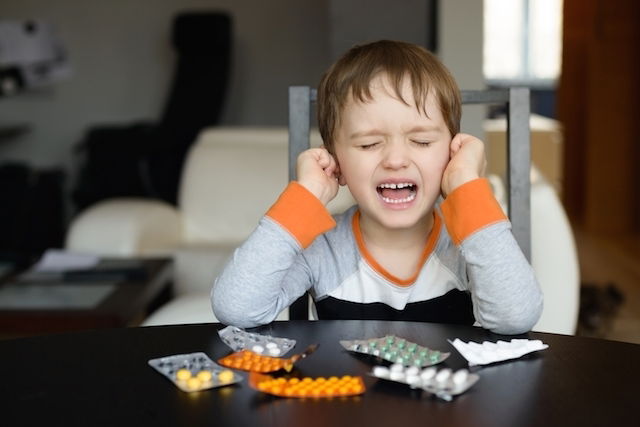ADHD symptoms will typically present with varying degrees of hyperactivity, impulsiveness or lack of attention. These may all be present, while some patients present with just one or two of these. This disorder is commonly diagnosed in childhood, but it can persist into adulthood, especially if left untreated.
The first signs of ADHD, or attention deficit and hyperactivity disorder, usually appear around the age of seven and are usually easier to identify in boys than girls. They may include lack of attention, agitation, stubbornness, aggressiveness or impulsive attitudes, which can make the child seem badly behaved.
If you suspect you or your child may have ADHD, enter the symptoms below:
Main symptoms
The signs and symptoms of ADHD can be divided into three main categories:
Lack of attention, which can be identified by signs like:
- Difficulty paying attention;
- Making avoidable mistakes due to carelessness;
- Showing signs of not listening when someone is speaks;
- Difficulty following instructions for school tasks, chores or professional duties;
- Losing important things that are necessary for tasks or activities;
- Avoiding tasks that demand constant mental effort;
- Frequent forgetfulness.
Hyperactivity, that usually has the following characteristics:
- Constantly moving the arms or feet or fidgeting in a chair;
- Coming out of the classroom or getting up when everyone else is sitting down;
- Running fast or climbing on top of things in inappropriate situations;
- Difficulty playing quietly or getting involved in quiet leisure activities;
- Constantly acting fast and agitated;
- Talking a lot.
Impulsivity, that can be noted by signs such as:
- Giving quick answers before questions have been fully asked;
- Having difficulty waiting for their turn;
- Interrupting or getting involved in other people's conversations.
Before thinking about diagnosing ADHD, it's very important to observe the child and try to understand his behaviors; as nervousness, fear or fatigue are situations that can also alter someone's behavior.

What to do if you suspect ADHD
If you suspect your child might have ADHD, it's important to visit a pediatrician so he can observe the child's behavior and evaluate if there's a real need for concern. If he identifies sings of the disorder, he may prescribe a check-up with another specialist, as the diagnosis is usually done through a psychiatrist or pediatric neurologist.
The specialist may request to observe the child at school, at home and other places he goes to frequently in order to confirm at least six signs that indicate the presence of ADHD.
Treatment for this type of disorder usually includes the use of medication such as ritalin, as well as behavior therapy with a psychologist.
ADHD vs autism: what's the difference?
ADHD can many times be confused with autism, and even generate some confusion for parents and family members. That's because both disorders have similar symptoms, such as having difficulty paying attention, not being able to sit still and difficulty waiting for a turn.
However, these two disorders are very different, especially in terms of what causes them. With ADHD, symptoms are related to the way the brain grows and develops, and in autism, there are may be several problems with the whole development of the child that can affect language, behaviors, social interaction and ability to learn. It is possible, however, for a child to have ADHD and autism at the same time.
As it can be difficult for parents to identify the differences between ADHD and autism, the best thing to do is to consult with a pediatrician or a psychologist, in order to do a correct diagnosis and start the best suitable treatment.

